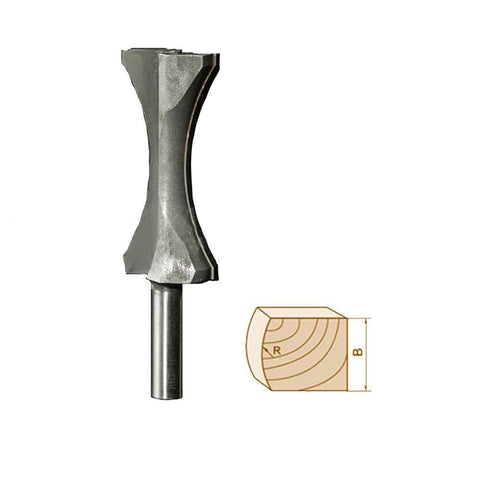What Router Bit to Use to Round Edges?
When it comes to woodworking, achieving smooth and rounded edges is essential for both aesthetic appeal and safety. Luckily, edge forming router bits are specifically designed to create rounded profiles on various materials, from wood to plastic and even metal. In this article, we will explore the versatility of edge forming router bits and help you discover the perfect router bit to use for rounding edges in your woodworking projects.
Understanding Edge Forming Router Bits
Edge forming router bits are a category of router bits that specialize in shaping and rounding the edges of workpieces. These bits come in various profiles and sizes, allowing woodworkers to achieve different curved and decorative effects. Here are some popular types of edge forming router bits for rounding edges:
- Roundover Bits: Roundover bits are the go-to choice for creating a classic, smooth, and rounded edge profile. They feature a quarter-circle cutting edge that removes the sharp corner and creates a softened curve. Roundover bits are available in different radii, allowing you to achieve varying degrees of roundness.
- Roman Ogee Bits: Roman ogee bits produce an elegant and decorative edge profile characterized by a concave curve followed by a convex curve. This intricate profile adds sophistication to furniture edges, moldings, and other woodworking projects.
- Beading Bits: Beading bits create a rounded profile with a small, decorative bead along the edge. They are perfect for adding visual interest and detail to furniture, cabinets, and trim work.
- Cove Bits: Cove bits produce a concave, curved profile that resembles a quarter of a circle. They are often used in combination with other edge forming router bits to create more complex profiles or to soften the edges of larger moldings.
Choosing the Right Router Bit for Rounding Edges
To select the appropriate edge forming router bit for rounding edges, consider the following factors:
- Desired Edge Profile: Determine the specific rounded edge profile you want to achieve. If you're aiming for a simple, rounded edge, a roundover bit is a versatile choice. For more intricate and decorative profiles, consider Roman ogee, beading, or cove bits.
- Material Compatibility: Consider the material you are working with, as different router bits perform better on certain materials. For instance, carbide-tipped router bits are ideal for wood, while high-speed steel (HSS) bits are better suited for plastic and non-ferrous metals.
- Bit Size and Radius: Choose a router bit size and radius that aligns with your project requirements. Larger bits with larger radii are suitable for larger workpieces or when a more pronounced curve is desired. Smaller bits with smaller radii work well for smaller projects or when a subtle rounding is preferred.
Tips for Using Edge Forming Router Bits
To achieve optimal results when using edge forming router bits to round edges, keep the following tips in mind:
- Router Setup: Ensure your router is properly set up with the appropriate speed and depth of cut for the specific router bit you are using. Follow the manufacturer's guidelines to ensure safe and accurate operation.
- Workpiece Preparation: Make sure your workpiece is securely clamped or held in place to prevent unwanted movement during the routing process.
- Test Cuts: Before working on your final project, it's always advisable to make test cuts on scrap material to familiarize yourself with the router bit and adjust the settings if needed. This practice will help you achieve the desired edge profile and ensure a clean and smooth result.
- Multiple Passes: When rounding edges with an edge forming router bit, it's often best to make multiple passes, gradually increasing the depth of cut with each pass. This approach reduces the chances of tear-out and produces a smoother finished edge.
Conclusion
Edge forming router bits are indispensable tools for achieving rounded and decorative edges in woodworking projects. Whether you're looking to create a simple roundover, an elegant Roman ogee, or a detailed beading profile, edge forming router bits offer the versatility and precision needed to achieve your desired edge profiles. By understanding the various types of edge forming router bits and considering factors such as profile, material compatibility, and bit size, you can confidently select the right router bit for rounding edges in your woodworking endeavors. Embrace the versatility of edge forming router bits and elevate the aesthetics of your projects by adding smooth and beautifully rounded edges.



